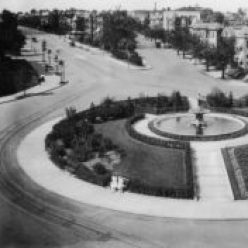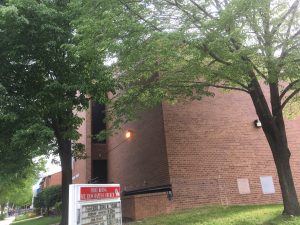First I fully support the Save Shaw Middle School effort. Regardless of what happens, the effort is needed. Because of efforts by parents and others to save the Shaw campus for Shaw families, I’ve learned what my in-boundary options look like. Seaton, our in-boundary school, currently feeds into Cardozo Education Campus for middle and high school.
But……….
When it comes to DC public schools (DCPS), I’m agnostic. I’m a product of several segregated and later sorta desegregated secondary schools, then post-secondary schools with the first name of University of [State]. I have worked with a variety of people who are products of public and or private schools, and known parents who have sent their children to a mix of schools or homeschooled for a variety of reasons. In DC I have witnessed how the option of charter schools kept families from jumping ship as soon as previous families had left.
 I’m agnostic about DCPS, because I remember what things were like in the mid-nineties and early 00s. DC schools used to suck. Parents were voting with their feet and the Cook school closed because of low enrollment. A lot of DCPS schools closed due to low enrollment. Then there was the explosion of DC charters, and many of them took over neighborhood school buildings that were doomed to close or had been abandoned. There is a complicated history of the Armstrong School, but it was empty, then a charter fixed it up (but that charter failed) and we didn’t have a crappy abandoned building sitting next to the building that looked like a prison (Dunbar). The Cook/Cooke school also in that part of the TC, was saved from the horrid fate of Langston, which has been abandoned and is falling apart, by a charter. So not even touching the education part, charters have been great in saving Truxton and parts of Shaw from the threat empty school buildings.
I’m agnostic about DCPS, because I remember what things were like in the mid-nineties and early 00s. DC schools used to suck. Parents were voting with their feet and the Cook school closed because of low enrollment. A lot of DCPS schools closed due to low enrollment. Then there was the explosion of DC charters, and many of them took over neighborhood school buildings that were doomed to close or had been abandoned. There is a complicated history of the Armstrong School, but it was empty, then a charter fixed it up (but that charter failed) and we didn’t have a crappy abandoned building sitting next to the building that looked like a prison (Dunbar). The Cook/Cooke school also in that part of the TC, was saved from the horrid fate of Langston, which has been abandoned and is falling apart, by a charter. So not even touching the education part, charters have been great in saving Truxton and parts of Shaw from the threat empty school buildings.
But getting back to education, I don’t desire to speak ill of neighborhood schools, but I cannot ignore what previous parents have done. In observing the choices former and current neighbors have made, they don’t want what DCPS is offering. If they are true believers in public schools, they move. Either they move west of the Park (WOTP) or out to the ‘burbs where the elementary to middle school options are more palatable.
Right now Destructo-toddler’s education needs are unknown. But I am concerned about him as a bi-racial kid. If he sees himself as black as opposed to bi-racial, there are certain pitfalls that knee-cap the success trajectory of black boys where public schools unwittingly play a part that worry me. So unless the school environment he needs exists a few years before he’s supposed to attend that school, it is not an option.
I’m not a true believer in public education. I’m agnostic. When it comes to Shaw Middle, I admire those fighting. Neighborhood-wise, it is necessary to make it a neighborhood asset. But it does not exist as a functional school yet, and I can’t judge its value. Seaton is okay. Playing with (OMG we had so much fun with this spreadsheet!) SY2017-18 Public School Enrollments per DCPS Boundary Excel file, we could see that a lot of parents choose out of boundary schools and charters. You have to go west to find the true believers, but even they eventually lose the faith.







